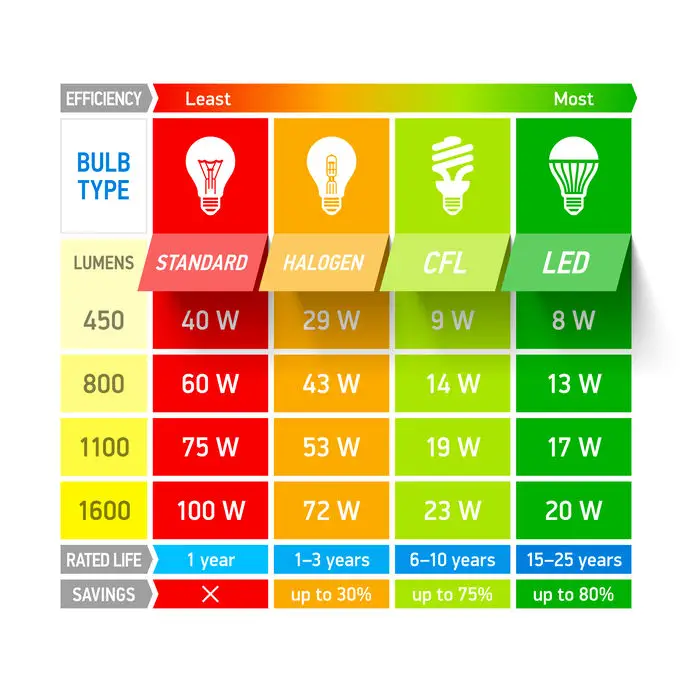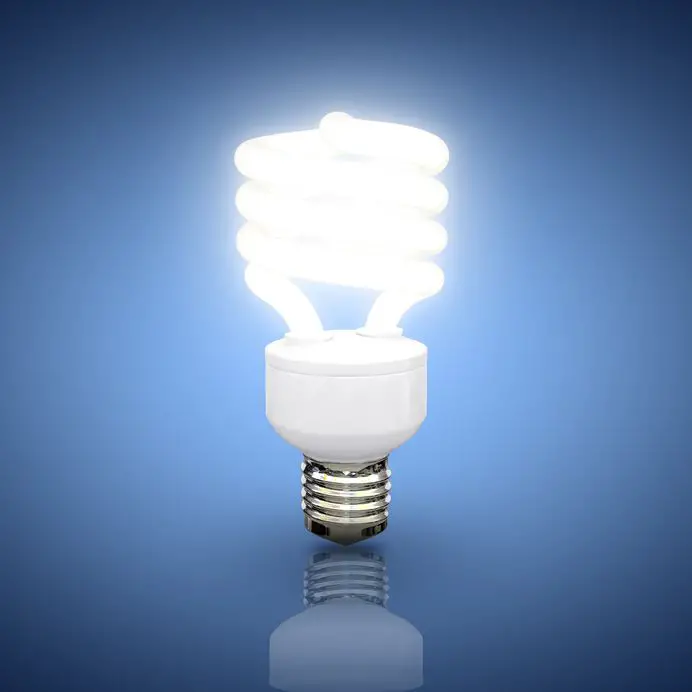What Are Lumens (lm) In Lighting? Luminous Flux Explained
If you have ever been in the process of renewing your lighting or otherwise read about some of the data regarding light bulbs you will likely have come across the unit lumens at some point.
Lumens (lm) is a measurement unit representing the luminous flux of any given light source, which means it describes the amount of light a bulb gives off. The higher the lumen value is the more visible light a light source produces and vice versa.
While this is the most concise and narrow definition of what lumens are there is much more to how it is measured and how its value is defined.
What Are Lumens In Lighting?
As described, lumens (lm) represent luminous flux. Luminous flux is essentially the amount of light a light source produces, irrespective of the power or fuel it requires to do so.
When it comes to home lighting the lumen value of bulbs often gets confused with its Watt (W). This is because it has become common to refer to a bulb’s strength by its power (W) instead of its luminous flux (lm) which would be more appropriate.
It is more appropriate to refer to a bulb’s strength by its luminous flux because several different bulbs can produce the same amount of light using different amounts of energy.
How Lumens Are Measured
Now that we know what lumens are on its surface we can look into how lumen is measured and defined.
In order to define the measurement of lumens we first need to introduce another unit of measurement, and this unit is Candela (cd).
Candela has a pretty complex definition within physics, but it essentially refers to the luminous intensity of light within a specified area. A common wax candle will be roughly equal to one candela when unobscured.
The difference between candela and lumens is that candela takes into account that the intensity of light drops off the further it travels from its source whereas lumens simply measure the amount of light that the source produces overall.
So, to define lumen in relation to candela it looks like this:
- Lumen (lm) = Candela (cd) * Square Radian (sr)
In order for this to make full sense we need an understanding of what a square radian is. Square radian (or steradian) is another unit of measurement that deals with cone shapes drawn within spheres. For better comprehension and visualisation of steradians, we recommend you go here.
The reason why steradians are relevant to lumens is that the angles and directions in which a light source emits light are relevant to its total luminous flux.
Now to put this into an example we can calculate the luminous flux of a candle. That calculation would look like this:
- 1 cd × 4π sr ≈ 12.57 lm
To explain this calculation it is rather simple. The surface of any given sphere is 4π times its radius squared (r2), or otherwise its “square radian”. So, what we end up with in this scenario is simply 1 time 4π, which gives us the result that a wax candle produces roughly 12.57lm.
Practical Applications Of Lumens
Now that we have properly defined what lumens are mathematically we can look at some of the practical applications of lumens in lighting.
Light Bulbs Being Marked With Lumen
The utmost important application for lumen is that it has become common practice for bulb manufacturers to mark their bulbs with their luminous flux.
The reason this is useful is for the reason mentioned earlier, in that the measurement of the lumen is far more effective than measuring bulb strength by its power in watts.
That said, the lumen of any given bulb is dependent on how much power it uses. But the relation between these values will depend on how efficient the light is at producing light compared to how much power it uses.

Luminous Efficacy
When we are talking about the relationship between the lumen and the power of a light we get what is known as “luminous efficacy”.
Luminous efficacy can be described as how much lumen a light source produces per watt of energy used. This gives us the measurement of Lumen per Watt or lm/W.
This number is extremely useful for measuring how efficient a light source is. The higher the lm/W is the more efficient it is. A way to conceptualize this is that if a light produces 100 lumens per 1 watt it is far more efficient than a light that produces 20 lumens with the same 1 watt.
If this number isn’t specified within the technical data of lighting it is easy to calculate. All you need to do is simply divide the bulb’s luminous flux by its described power in watts. Both of these numbers are almost always stated somewhere in the lights’ technical data.
Using this number you can easily determine which light sources have high luminous efficacies and which ones don’t.
Luminous Efficacy Of Common Bulbs
There are many different types of bulbs that all produce light using different principles and technologies. That said, they are all compared by their luminous efficacies to see which technology turns out to be the most efficient.
Here are some of the luminous efficacies for the most common bulbs available.
| Bulb Type | Luminous Efficacy |
|---|---|
| LED | 80-200 lm/W |
| Fluorescent Tube | 50-100 lm/W |
| Compact Fluorescent Lamp (CFL) | 50-70 lm/W |
| Halogen | 20-36 lm/W |
| Incandescent | 10-12 lm/W |
| Low-Pressure Sodium | 40-180 lm/W |
| High-Pressure Sodium | 40-140 lm/W |
Using these numbers we can easily determine which lighting options will use a considerably larger amount of energy to produce the same amount of light as some of the more efficient options on the list.
For example, using these numbers we can claim that an LED bulb will be 7-16 times as efficient at converting energy into light when compared to an incandescent bulb.
Summary
To summarize, in lighting lumens refer to the luminous flux of a light source, which in essence means it describes the amount of light it produces. This number is defined by its relation to the unit Candela (cd) and Square Radians (sr).
The reason why lumens are important is that they are the most accurate way of describing how much light a light source produces, rather than it’s power in watts which is what is most common among most people.
Once we start thinking in terms of lumens instead of power in watts you can easily navigate the lighting market since almost all lighting will state their luminous flux in lumens somewhere in its technical data.
The lumens are also useful to determine a light source’s luminous efficacy, which you get by dividing its luminous flux by its power (lm/W). Using this it is easy to determine what light sources are efficient and which ones are not.





